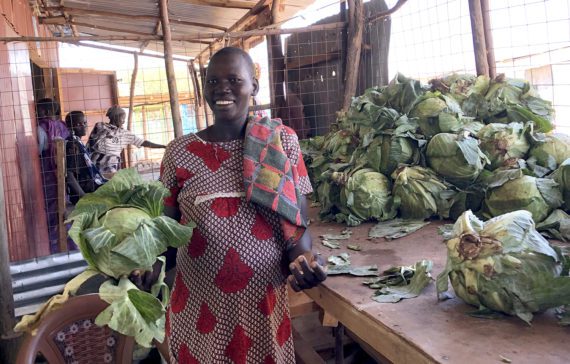Drivers of the Crisis:
- Climate change impacts, particularly
- Prolonged drought
- Spiking prices of basic foods
Most Important to Know:
- Kenya has been identified as a country of particular concern in the most recent global humanitarian needs assessment by the World Food Programme (WFP) and the Food and Agriculture Organization (FAO). Both the large numbers of people living with critical food insecurity and the expected worsening of the drivers of hunger contribute to this assessment.
- After three years in a row of insufficient rainfall, much of northern and eastern Kenya is suffering from the worst drought in 40 years, which is driving thousands of people from their homes.
- Approximately 3.5 million people need humanitarian assistance.
- More than three-quarters of a million people (758,000) are living on the verge of famine—a 75 percent increase over the same period in 2021.
- In the province of Marsabit, 20 percent of the population is on the verge of famine—the highest rate in the country.
- Approximately 755,000 children under 5 will suffer from acute malnutrition in 2022, according to the International Federation of the Red Cross. In the province of Mandera, nearly 35 percent of all children under 5 are affected by this life-threatening condition.
- Ongoing struggles with outbreaks of the African armyworm pest threaten to reduce crop harvests.
- Violent conflict over access to scarce resources is on the rise in areas affected by drought, with possible impacts on people’s ability to farm, their access to essential resources, and the ability of humanitarian aid supplies to reach them.
- The top priority of humanitarian response workers is to reach everyone in need with life-saving food and nutrition services.
- There are two additional top priorities.
- The first is to support Kenya’s Hunger Safety Net Program and other social protection systems whose goal is to identify and ensure that assistance is provided to people in vulnerable groups. These include children younger than 2 and pregnant or lactating women.
- The second is to protect the livelihoods of farmers and pastoralists. Restoring their ability to work at full capacity is essential to the task of resuming seasonal food production as soon as possible.
How Bread Is Helping:
Bread’s ongoing advocacy for robust humanitarian food and nutrition assistance is essential to an effective response to the hunger crisis in Kenya. Bread for the World members are longtime faithful advocates for people in hunger emergencies and have already helped to win additional humanitarian funding for 2022. This is part of Bread’s efforts to persuade Congress to allocate funds that save lives, prevent irreparable harm from early childhood malnutrition, and ease suffering. Bread members also champion U.S. development assistance, which helps prevent hunger emergencies by enabling and equipping people to build resilient communities.



